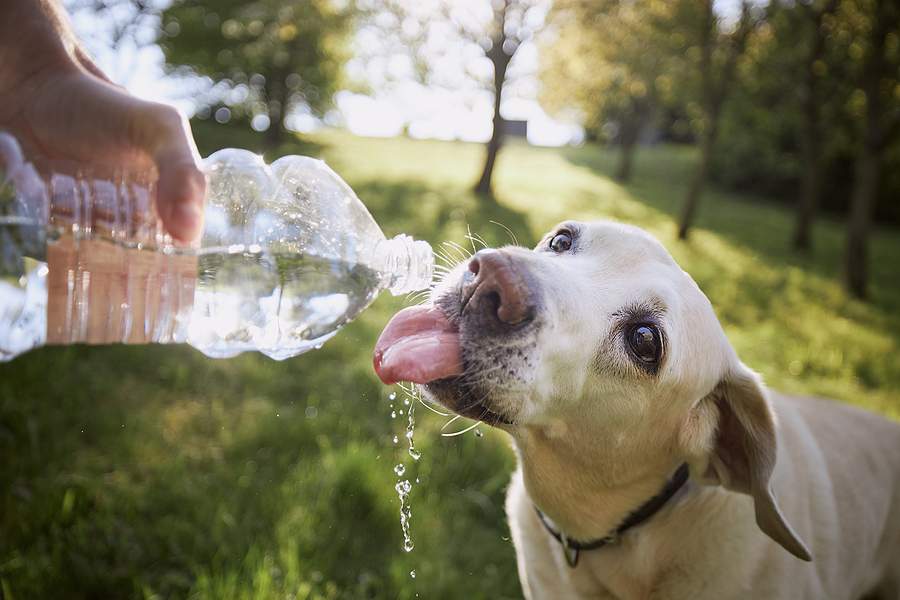As the cold season has gone away until next year and spring is drawing to a close, you are naturally looking forward to heading outdoors for some fun in the sun with your four-legged friend. However, you need to know how to prevent pet heatstroke to ensure that both of you keep on having a good time.
What Is Pet Heatstroke?
Heatstroke, also known as heat exhaustion or overheating, happens when an animal’s body temperature rises above normal, i.e., 100 to 102.2 degrees. Humans can cool off by sweating, but dogs and cats only have a limited number of sweat glands (in their paws), which causes them to overheat more easily. Pets cool down by panting – moisture evaporating from the oral cavity helps to lower their body temperature.
What Causes Pet Heatstroke?
Heatstroke is associated chiefly with pets being left outside in hot weather. When outside on hot days, your pet should always have access to fresh drinking water and shelter from direct sunlight. However, there are also other causes of heatstroke, such as:
- High humidity, even in lower temperatures.
- Not enough breaks from activity in order to cool down.
- Being exercised during the hottest part of the day – walk your dog in the morning or evening when temperatures are cooler.
- Inadequate access to water on warm sunny days.
- Being shaved in the summer.
- Being left in a closed-up house on a hot day with no air conditioning or adequate ventilation.
- Being left inside a car, especially with the windows closed, even if it is not particularly hot outside. Heat can quickly build to deadly levels in a closed car.
What Are the Signs of Heatstroke in Pets?
Overheating is dangerous to your pet’s health and can even cause death if symptoms are not recognized immediately. Here are some warning signs to watch out for:
- Excessive panting and/or drooling.
- Difficulty in breathing.
- Vomiting.
- Diarrhea (with or without blood).
- Weakness or lassitude.
- Stumbling or incoordination.
- Sudden collapse.
- Seizures.
Which Pets Are More Likely to Develop Heatstroke?
Any pet can develop heatstroke, but short-muzzled dogs, such as pugs and bulldogs, have an increased risk because they are hampered from eliminating heat by panting. Elderly pets, overweight animals, and those with lung or heart diseases are also more at risk. It’s best for these pets to have limited exposure to outside heat during the summer.
What to Do if Your Pet Shows Signs of Heatstroke
If your pet is panting a lot or vomiting, take him out of the sun and offer cool (not cold) water. Take his temperature rectally and if it is well over 102.2 degrees, wrap him in towels saturated in lukewarm water and wipe rubbing alcohol on his paw pads. It’s essential to allow your pet to cool down gradually – exposure to cold water should be avoided as this can cause unsafe blood pressure changes.
Your pet’s body temperature should begin to decrease, and you can stop the cooling when it reaches 102 degrees – you want to prevent your pet from becoming too cold as the body temperature continues to drop.
After ten minutes, if your pet’s condition has not improved, it’s time for an emergency visit to a vet for advanced treatment, which may include blood pressure maintenance, intravenous fluids, or medications.
Midlands Pet Care wants your pet to get safely through the dog days of summer. Midlands Pet Care is a family-owned and operated company specializing in pet cremation and burials. They have been serving the needs of the SC Midlands area with compassionate care since 1995.

